Paint Sprayer vs Roller (Which is Better?)
Unsure if a paint sprayer or roller would be better for your project? This comparison breaks down the differences and when to choose one over the other.
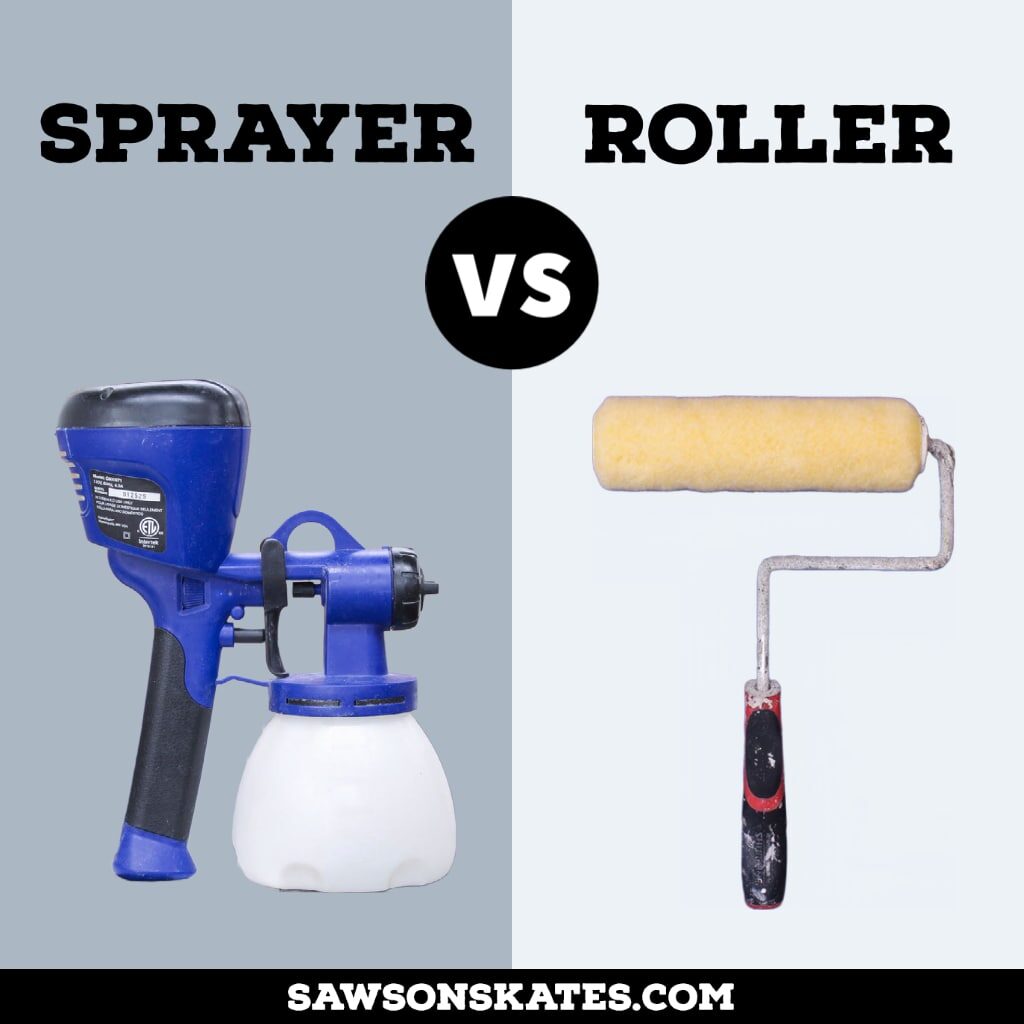
When it comes to painting, there are a few ways to go about it. You can use a roller or a paint sprayer. Each has pros and cons, so which is the best option for your project? Well, that depends on your needs.
In this article, I’ll explain what each one is used for, the benefits and drawbacks of each, and the differences between them so you can decide which tool is the best option for your project. Let’s get started!
Table of Contents
- What is a Paint Sprayer?
- What are Paint Sprayers Used For?
- Types of Paint Sprayers
- Paint Sprayer Pros and Cons
- What is a Roller?
- What are Rollers Used For?
- Types of Roller Covers
- Roller Sizes
- Paint Roller Pros and Cons
- What’s the Difference Between a Paint Sprayer and a Roller?
- Paint Sprayer vs Roller: Which Should I Use?
- Frequently Asked Questions
This article contains affiliate links. If you purchase from these links, I may earn a small commission at no additional cost to you. Visit my site policies for more information.
What is a Paint Sprayer?
A paint sprayer is a tool that applies a fine mist of paint, stain or finish from a nozzle onto a surface.
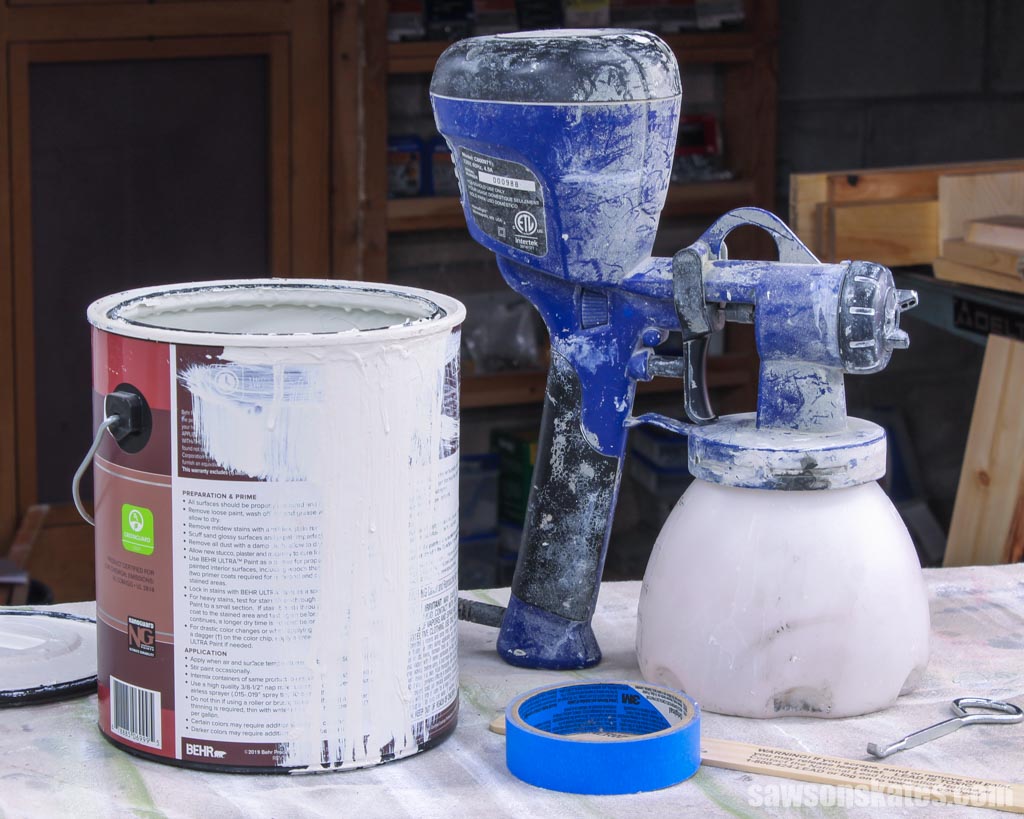
One of the biggest benefits of using a paint sprayer is the speed. You can cover a larger surface area in a shorter amount of time compared to other methods.
They’re ideal for projects with areas that are difficult to reach with a brush or roller, such as cracks and crevices, detail work on furniture, or textured surfaces like brick and stucco.
Paint sprayers can also give your project a professional finish. When done correctly, paint-sprayed surfaces will be smoother than those painted with a brush or roller.
Those are the main reasons I purchased this paint sprayer. This DIY outdoor coffee table is loaded with nooks and crannies. I estimated applying a coat of primer, and two coats of paint with a brush would take me nearly seven hours! Using a sprayer allowed me to complete the project in just a few hours.
Another advantage is that you can get a smooth, professional-looking finish with a paint sprayer. This is because the mist helps to distribute the coating on the surface evenly.
Related: 7 Ways to Prevent Orange Peel Texture When Using a Paint Sprayer
The downside is sprayers can be messy. The mist can travel beyond the surface you’re spraying and land on nearby objects, which is known as overspray. And if you apply too much product all at once, you can end up with drips or runs.
Related: How to Spray Paint Indoors (Without Making a Mess!)
There are a few more things to consider if you’re thinking about buying a sprayer.
Depending on the model, some sprayers may be difficult to clean up. This is because the paint can collect inside the sprayer and nozzle, making it difficult to remove.
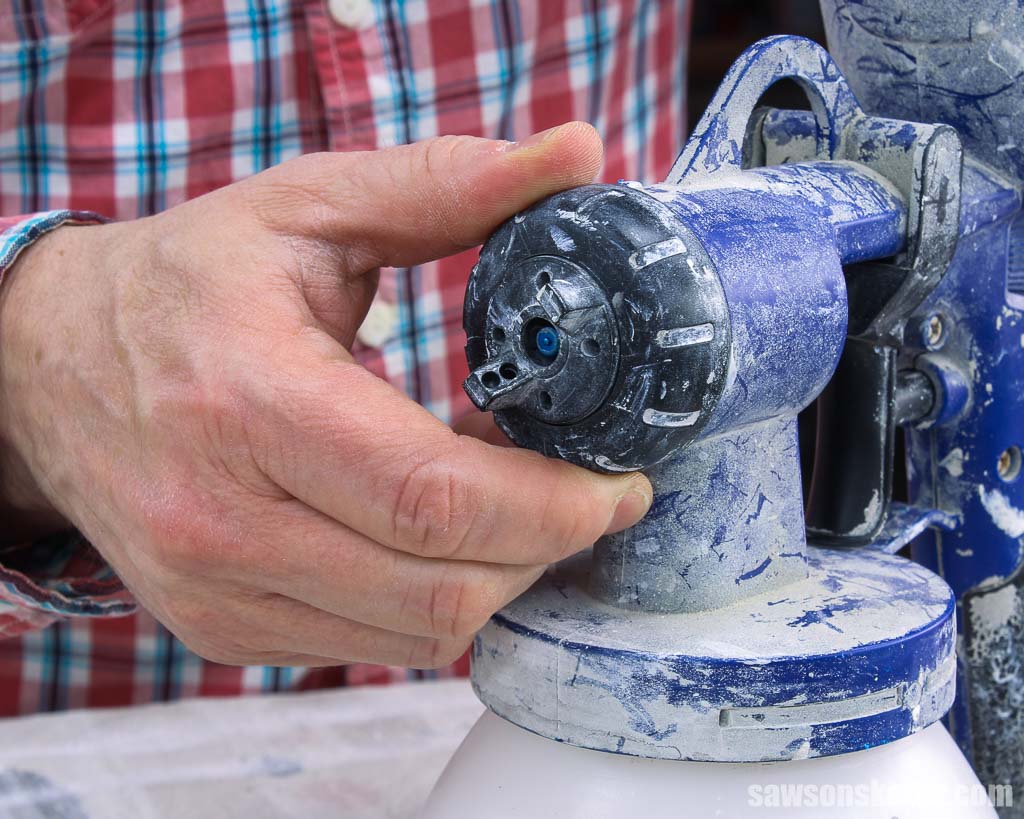
It takes some practice to get the hang of using a paint sprayer. If you’re new to using one, it’s best to start on cardboard or scrap pieces of wood before moving on to your main project.
Some sprayers may require you to thin the paint. Thinning means adding a liquid to the paint so it has a consistency that will flow properly through your sprayer.
For example, water-based products such as latex paint are thinned with water, and oil-based products may be thinned with paint thinner or mineral spirits.
Related: Mineral Spirits vs Paint Thinner (Differences & Uses)
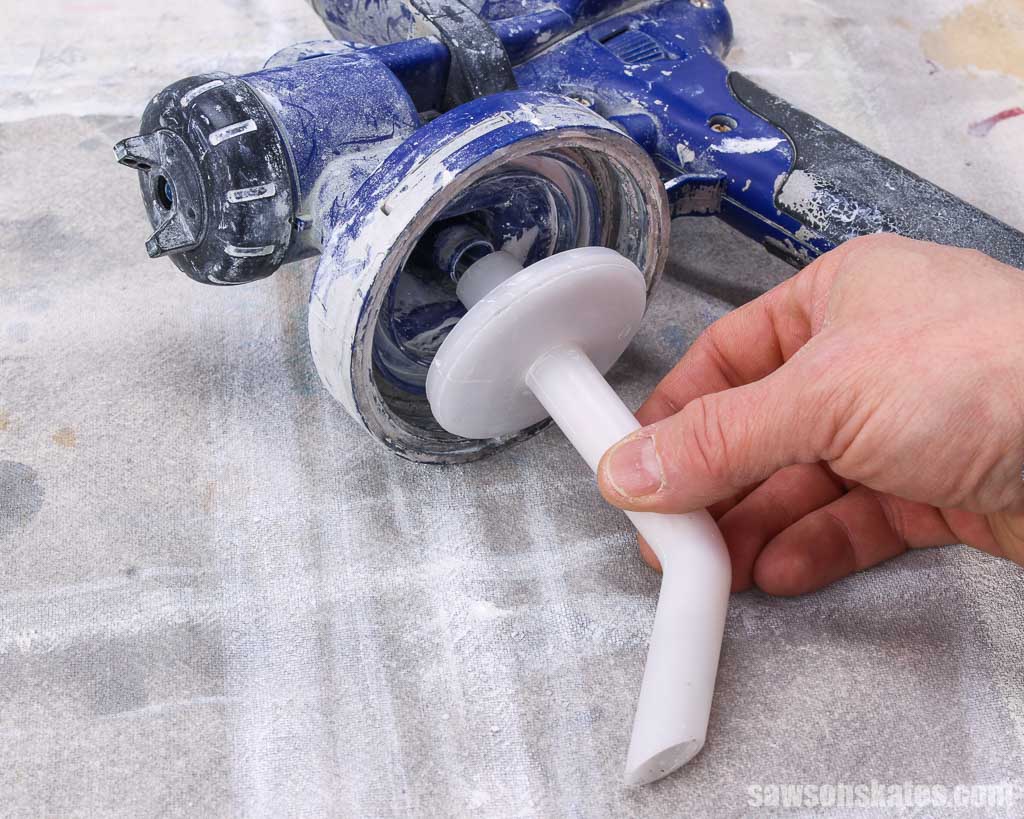
The amount you need to thin will depend on the type of paint and sprayer you’re using, so be sure to read the instructions before getting started.
Paint sprayers are also more expensive than other painting tools like rollers or brushes.
What are Paint Sprayers Used For?
Paint sprayers are commonly used for applying coatings to large surfaces quickly and evenly. They’re ideal for indoor projects that require a smooth finish, like cabinets and furniture. They may also be used for outdoor projects such as fences or siding.
Sprayers can apply a variety of products such as primer, paint, and stain. I’ve even used my sprayer to apply chalk-type paint to these DIY collage picture frames.
Related: The Beginner’s Guide to Spraying Chalk-Style Paint
Both old and new paint may contain debris and clumps of dried paint that can clog your sprayer’s nozzle. To avoid clogs and ensure a smooth finish, I always strain my paint before adding it to my sprayer.
Related: How to Strain Paint (3 Easy Ways)
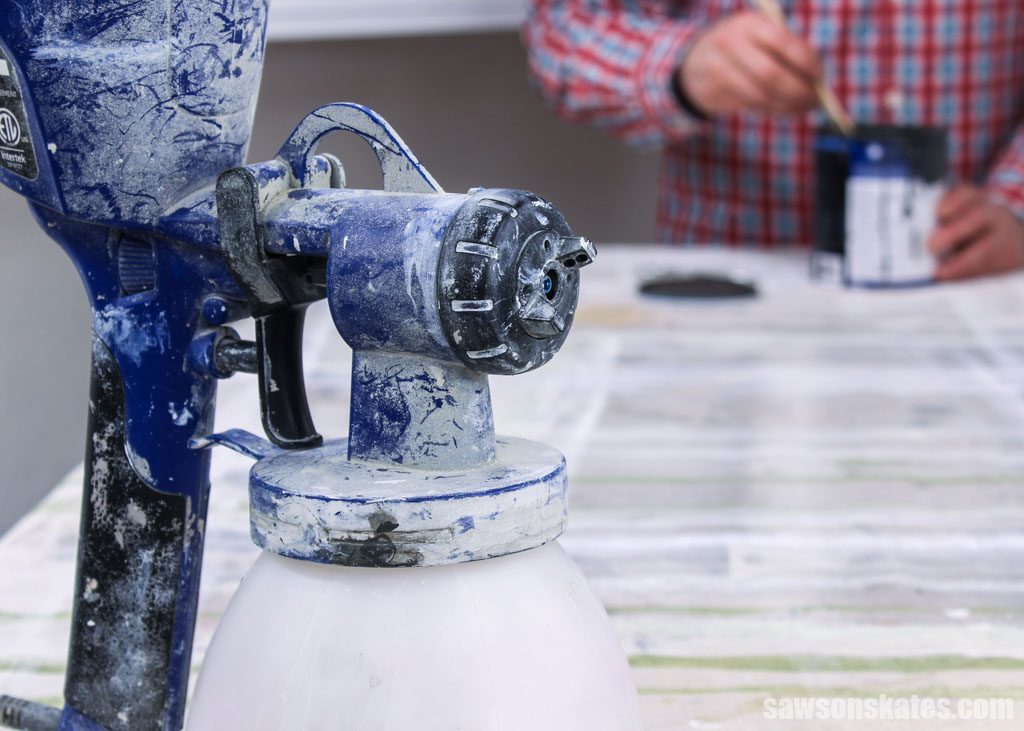
You can also use sprayers to apply top coats like polyurethane to protect surfaces from wear and tear.
Related: How to Spray Polyurethane
📝 NOTE: You will need to wear protective gear like a mask and safety glasses when using a paint sprayer. This is because the mist can be harmful if inhaled or if it gets in your eyes.
Types of Paint Sprayers
Paint sprayers come in a few varieties. The most common types are pneumatic, airless, and HVLP (high-volume low-pressure).
What is a Pneumatic Paint Sprayer?
Pneumatic sprayers apply paint using compressed air from an air compressor.
Compressed air sprayers produce a smooth, even finish, but they have a few drawbacks. In addition to the sprayer, you’ll need an air compressor and an air hose running from the compressor to the sprayer.
Also, pneumatic sprayers can be messy because they produce more overspray than other types of sprayers.
What is an Airless Paint Sprayer?
Airless sprayers work by pumping paint directly from the can or container to the spray nozzle. There’s no need for an air compressor, which makes them more portable than pneumatic sprayers.
Airless paint sprayers use a pump to draw paint from a container and push it at high pressure (up to 3,000 psi) through a hose to the sprayer’s nozzle.
The benefit of airless sprayers is that they produce an even coat of paint. They are also the fastest type of sprayer, making them ideal for large projects where you need to cover a lot of ground quickly.
The drawback is they push the paint a such a high pressure that it can produce a lot of overspray.
What is an HVLP Paint Sprayer?
HVLP (high-volume, low-pressure) sprayers use a turbine to draw paint from a container and push it through the sprayer’s nozzle. Because it applies coatings at high volume and low pressure, HVLP sprayers produce less overspray than airless or pneumatic sprayers. This makes HVLP sprayers ideal for indoor projects, small projects, or when you require precision with your paint job.
HVLP sprayers are popular with do-it-yourselfers because they’re relatively affordable and easy to use. It’s the type of sprayer I purchased for my projects.
Paint Sprayer Pros and Cons
Pros
- Quickly coats large surfaces
- Ideal for projects with hard-to-reach areas
- Can be used to apply primer, paint, stain, and top coats
- Eliminates brush strokes for a smooth, flawless result
- Saves time compared to other painting methods
Cons
- Sprayers can be messy and difficult to clean up
- Some sprayers may require additional equipment, such as an air compressor
- More expensive than other painting tools
- You will need to wear protective gear, like a mask and safety glasses
What is a Roller?
A roller is a painting tool that applies paint, stain or finish to a surface with a cylindrical pad called a roller cover. The cover can be made of various materials such as foam, synthetic fiber, or natural fibers.
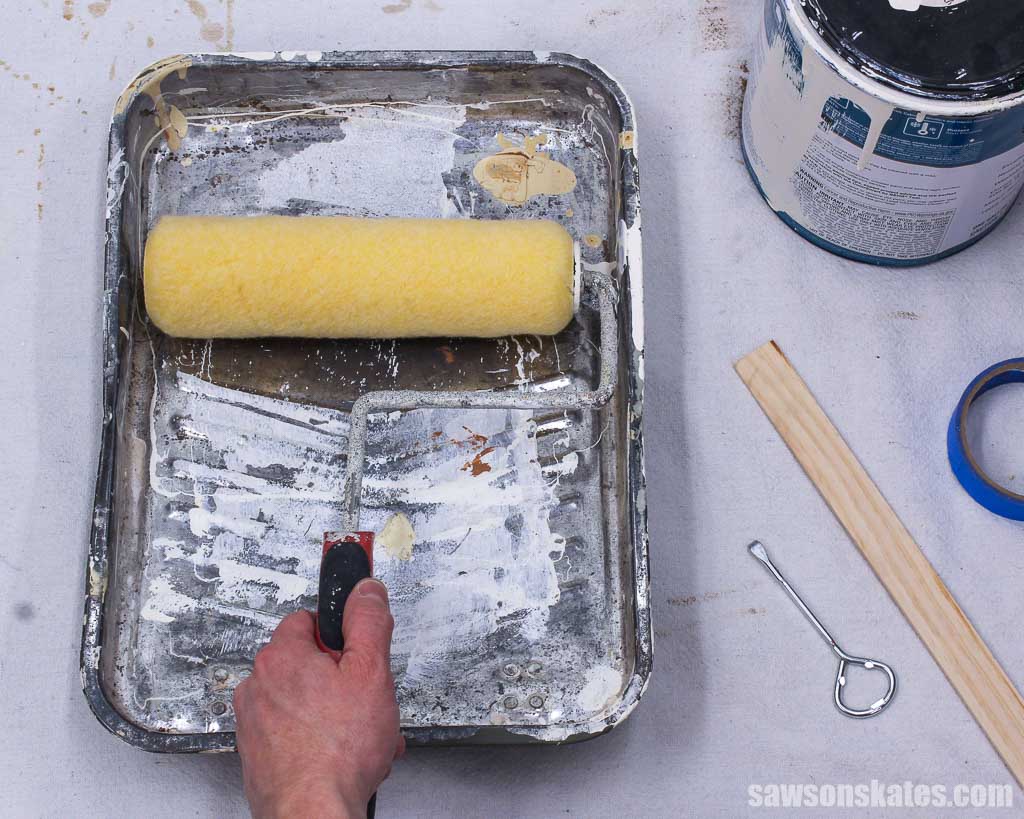
Rollers are one of the most popular painting tools because they’re relatively inexpensive and easy to use. They can be used for a variety of projects, both big and small.
Rollers are ideal for projects that require even coverage without brush strokes. The drawback of a roller is that it can be more difficult to get into tight spaces.
A roller is relatively straightforward to use compared to a sprayer. First, you don’t have to thin the paint when using a roller. All you have to do is pour the paint into a paint tray, dip the roller in the paint and roll it on the surface you wish to paint.
What are Rollers Used For?
Rollers are frequently used for large projects because they can quickly cover a lot of surface area. They are commonly used for painting walls and ceilings and can also be used to paint doors, furniture, cabinets, and other large, flat surfaces.
Rollers can be used to apply various products, including primer, paint, stain, and top coats.
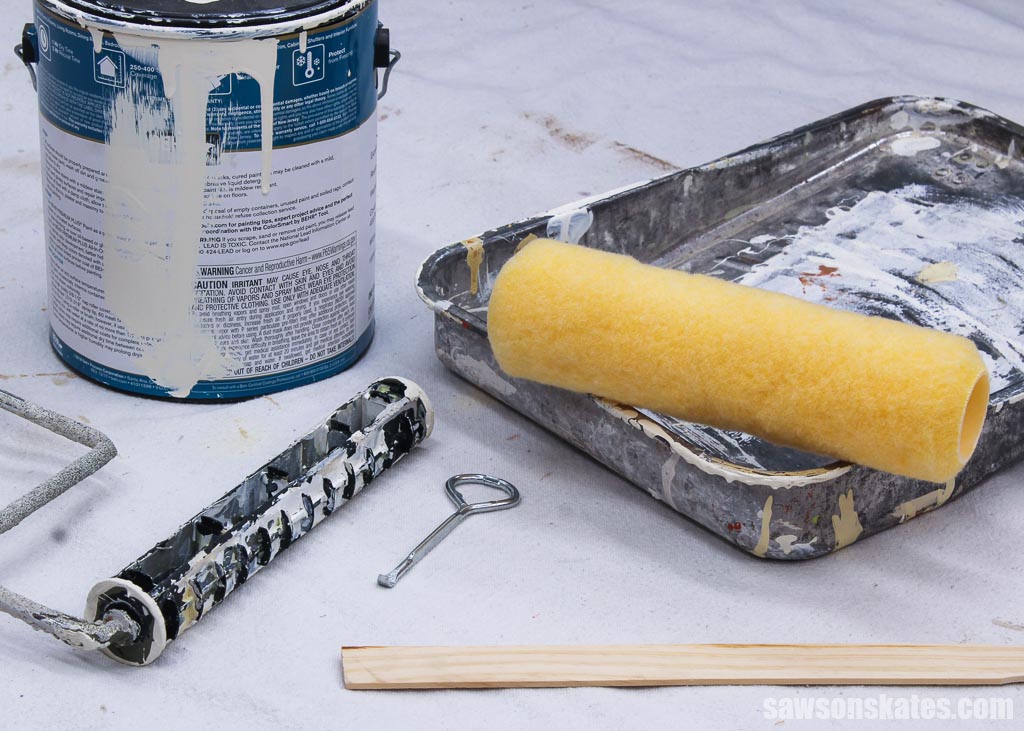
In addition to the roller frame itself, you’ll need a roller cover and paint tray. You’ll also want a drop cloth or old sheet to protect the floor or surrounding areas from paint splatters.
You may also want to consider using an extension pole with your roller. Extension poles are great for reaching high ceilings or hard-to-reach places.
Types of Roller Covers
Roller covers come in various materials and sizes, each designed for a specific type of project. Choosing the right style for the job is important when buying a cover. The most common types are foam, synthetic, and natural fiber roller covers.
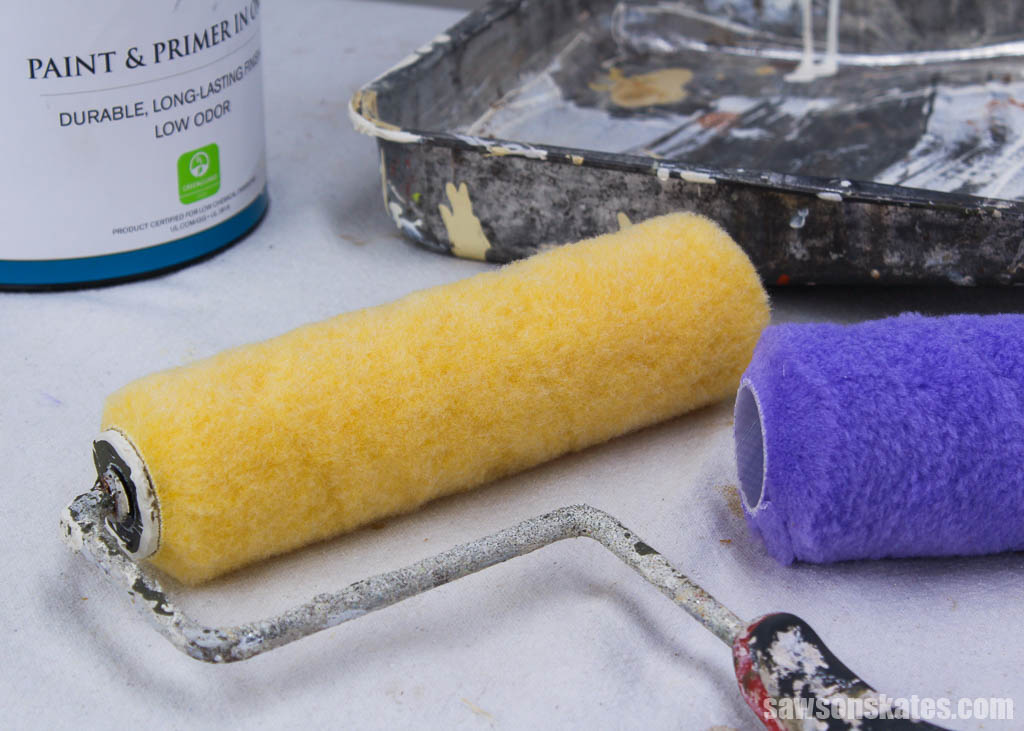
Foam
Foam roller covers are made of a soft, spongy material. They work well for applying gloss or semi-gloss latex paint to smooth surfaces such as cabinets and doors.
A foam cover holds paint well and doesn’t shed or leave lint behind like other roller covers; however, they’re not as durable.
Synthetic
Synthetic roller covers are made of polyester or nylon fibers. They are ideal for applying water-based coatings and latex paints to textured surfaces. Synthetic covers are more durable than foam rollers but are more likely to shed.
Natural
Natural fiber roller covers are made of materials like lambswool or mohair. They are ideal for applying oil-based coatings to textured surfaces.
Roller Sizes
The size of the roller you need will depend on your project. Smaller rollers are great for small areas or when you need precision with your paint job, and large rollers are better for quickly painting large surfaces.
- Large
Large rollers range in width from 12 to 18 inches and are commonly used by professional painters. - Standard
Standard rollers range in width from 7 to 12 inches. However, 9-inch rollers are the most common size used by do-it-yourselfers for large projects like painting walls and ceilings. - Small
Small rollers range in width from 6 to 7 inches and work well for smaller surfaces like furniture and trim. - Mini
Mini rollers are less than five inches wide and work well for small areas, tight spaces, and hard-to-reach places.
Paint Roller Pros and Cons
Pros
- Inexpensive and easy to use
- Can be used for a variety of projects, both big and small
- Quick and easy way to cover large areas, such as walls and ceilings
- Faster than using a paintbrush
- Less messy than other painting tools like paint sprayers
- Can be used to apply a variety of products such as primers, paints, stains, and top coats
Cons
- Can be difficult to get into tight spaces
What’s the Difference Between a Paint Sprayer and a Roller?
Now that we’ve covered the basics of paint sprayers and rollers let’s compare them side-by-side.
Before we explore the differences, let’s look at what they have in common. Both sprayers and rollers can apply various products, including primer, paint, stain, and top coats.
The mist from the sprayer helps to eliminate brush strokes for a flawless result.
They can be used for small and large projects but are excellent for covering large areas quickly. Rollers and sprayers apply a uniform coat which eliminates brush strokes for a smooth finish.
Now let’s explore the key differences between a paint sprayer and a roller.
Ease of Use
Sprayers require a bit more setup and skill to use than rollers. You’ll often need to thin the paint so it will easily flow through the spray. Then you’ll fill the paint reservoir and adjust the spray pattern. It also takes a little practice to get the hang of using a paint sprayer.
Rollers, on the other hand, are quick and easy to use. Just pour the paint into a paint tray, dip the roller in, and start painting.
Speed
Sprayers can cover a large area in a short amount of time. Rollers are also fast, but not as fast as paint sprayers. Rollers are a good choice if you’re looking for a balance between speed and accuracy.
Precision
Paint sprayers are less precise than rollers. On the other hand, rolling paint provides more control, so you can easily paint around obstacles and get the paint exactly where you want it.
Cost
Paint sprayers are more expensive than rollers, and depending on the sprayer, you may need additional equipment like a compressor and air hose.
Rollers are more affordable than sprayers, but the type of cover you choose will affect the price. For example, natural fiber roller covers tend to be more expensive than synthetic roller covers.
Hard-to-Reach Areas
Sprayers can be used to paint hard-to-reach areas, such as in between the slats of this DIY outdoor coffee table. Rollers are often too big to fit into these tight spaces.
Overspray
Paint sprayers can produce overspray, which is paint that goes beyond the intended area. Rollers, on the other hand, don’t cause overspray. That said, you may find paint specks on the floor after using a roller to paint ceilings and walls.
Paint Sprayer vs Roller: Which Should I Use?
We’ve looked at the key differences between a paint sprayer and a roller, but you still might be wondering which one is right for your next project. It’s important to note that sprayers and rollers have pros and cons. There is no “right” way to paint a project – it ultimately comes down to personal preference.
In a nutshell, if speed is essential, your project has a lot of nooks and crannies, and precision isn’t as important, a paint sprayer may be the way to go. But a roller is a good choice if you’re looking for an affordable and easy-to-use option with more accuracy.
Roll or Spray Interior Walls?
When it comes to whether you should roll or spray walls and ceilings, it all depends on whether your house is existing or new construction. If your home is newly constructed or you’re doing a renovation and haven’t installed the flooring, cabinets, or other fixtures, a sprayer is an excellent choice since you won’t have to mask these objects from overspray.
Masking is a process where you cover areas that you don’t want to paint. This can be done with painter’s tape, plastic sheeting, or newspapers. Masking helps to prevent paint from getting on surfaces where you don’t want it.
However, if your home is finished, you’ll need to mask any places you don’t wish to paint, such as cabinets, flooring, window, and door trim. This prep work can be time-consuming and often quicker to use a roller.
So, what’s the bottom line? Many DIYers, myself included, use a roller for painting walls and ceilings.
Roll or Spray Kitchen Cabinets?
You can roll or spray kitchen cabinets, but I prefer rolling because it gives you more control. The trick with rolling cabinets is using the correct paint.
Urethane enamel is my preferred paint for cabinets because it provides a hard, long-lasting finish that can be scrubbed. It’s also self-leveling, which means it flows out evenly and doesn’t leave streaks or brush strokes.
If you decide to roll your cabinets, you’ll want to use a mini roller. Regular-sized rollers can be too big and cumbersome.
Roll or Spray Exterior Projects?
For outdoor projects, such as painting a fence or the exterior of your home, a sprayer can save you time and hassle. It also works well for deep exterior textures such as masonry and stucco. In contrast, it can be challenging to paint heavily textured surfaces with a roller because the paint often pools and drips from the crevices, and the textures can tear the roller cover.
Keep in mind that when using a paint sprayer outdoors, you’ll need to be extra careful to avoid getting overspray on surrounding objects such as cars and your neighbor’s house.
Roll or Spray Furniture?
Whether you’re painting a dresser, table, or chairs, getting an even coat of paint is important. You can roll or spray furniture, but I prefer to use a sprayer.
A sprayer is a good choice if you’re painting furniture with intricate details such as spindles, carvings, or dentil molding. It can be challenging to get paint into all the nooks and crannies with a roller.
Frequently Asked Questions
Do professional painters use sprayers?
Many professional painters use paint sprayers because they’re fast and efficient. That said, some pro painters prefer to use rollers because they provide more control.
Is it better to paint with a sprayer or roller?
It depends on your project and personal preferences. Paint sprayers are fast and efficient, but they require more setup than rollers. Rollers are affordable and easy to use, but they’re not as fast as paint sprayers.
Final Thoughts
Paint sprayers and rollers are both great painting tools. It’s important to consider the size of your project, your budget, and your personal preferences before deciding which one to use. Whatever tool you choose, take your time and enjoy the process!
Thank you for stopping by. If you enjoyed this tutorial, would you please take a moment and pin it to Pinterest? I’d really appreciate it!

